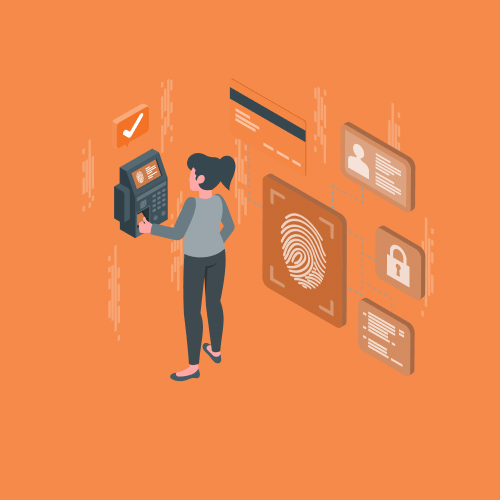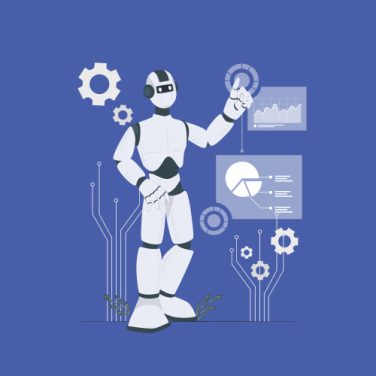A biometric attendance machine is an electronic device that uses unique physiological or behavioural traits—such as fingerprints, facial features, or iris patterns—to record employee time and attendance. This smart hardware replaces manual punch cards and PIN-based entry, offering robust identity-based tracking and secure logs.
The technology has evolved from magnetic stripe cards and numeric codes to advanced fingerprint attendance machine modules, infrared facial recognition, and high-resolution iris scanners. Touchless solutions support hygienic operation in shared environments and high-traffic areas.
When integrated with payroll software, a biometric attendance machine becomes the front end of a modern HR ecosystem. Real-time data sync into platforms like MiHCM drives seamless payroll, leave management, and actionable workforce analytics.
Why traditional methods fall short
Manual time tracking suffers from inaccuracies, delays in data entry, and administrative overhead. A biometric solution solves these challenges with automated, tamper-proof records.
Adopting a portable biometric attendance machine boosts flexibility for remote sites and field operations. Organisations gain audit-ready logs, simplified compliance reporting, and improved workforce transparency. It supports cloud and on-premises deployments.
These machines ensure fast, accurate validation of employee attendance records. A fingerprint attendance machine may complete a 1:1 verification in under half a second, enabling efficient throughput at entry points.
Cloud-based systems sync data in real time into HR platforms like MiHCM for payroll and compliance reporting. Modern devices include tamper alarms and fingerprint liveness detection to block spoofing attempts, ensuring data integrity and security compliance. They support local backup and batch upload when network connectivity is limited.
Key hardware components to consider
Selecting the right hardware components impacts performance, reliability, and deployment flexibility. Key considerations include:
| Component | Description | Key Considerations |
|---|---|---|
| Biometric Sensors | Optical or capacitive fingerprint reader; infrared camera for facial recognition; camera-based iris scanner | Accuracy, environmental resilience, hygienic touchless options |
| Processor & Memory | On-board CPU and RAM dictate match speed and template capacity | Concurrent user load; template database size; firmware upgrade support |
| Communication Interfaces | Ethernet, Wi-Fi, USB, 4G/LTE modem options | Network reliability; deployment topology; remote management requirements |
| Power & Enclosure | PoE support, battery backup for portable machines, rugged casing | Installation environment; power availability; ingress protection (IP) rating |
Biometric sensors form the core of any biometric attendance machine. Optical fingerprint modules are cost-effective but sensitive to surface contaminants. Capacitive readers offer better durability. Infrared facial cameras provide touchless operation and function in varied lighting. Iris scanners deliver millimetre-level accuracy, ideal for high-security zones.
A robust processor coupled with sufficient memory ensures low-latency matching—even with a local database of thousands of templates. Devices designed for mobile use may include battery backup and compact enclosures. Communication ports determine whether attendance logs sync over LAN or cellular networks.
For organisations integrating with HR platforms like MiHCM, selecting hardware with open API support simplifies data flow. Portable biometric attendance machines leverage USB or Wi-Fi connectivity, facilitating rapid deployment for temporary sites or field operations without extensive infrastructure.
When evaluating enclosure options, consider environmental factors: dust, moisture, temperature extremes. IP65-rated casings safeguard internal electronics in harsh factory floors or outdoor access points. PoE-enabled units reduce wiring, while wireless modules support remote or mobile use cases.
In rugged environments, look for IP67-rated units with reinforced housing. Portable biometric attendance machines may include hot-swappable batteries, providing up to eight hours of offline operation. Devices supporting PoE eliminate separate power cabling, simplifying installation and reducing hardware costs and maintenance overhead.
Identification modes: Fingerprint, face, iris, and more
Selection of the right identification mode depends on security requirements, user experience, and budget. Most biometric attendance machines support one or more of these modalities:
Fingerprint: Cost-effective, compact, and fast. Ideal for high-volume settings but requires physical contact and may degrade with skin condition.
Facial Recognition: Touchless, hygienic, and suitable for crowded entry points. Performance varies under extreme lighting or if the subject wears accessories.
Iris Recognition: Offers highest accuracy and spoof resistance. Best for critical security zones but typically involves higher hardware costs and longer scan times.
Multimodal Systems: Combine two or more traits—such as fingerprint plus face—to boost fraud resistance and reduce false matches.
Pros and cons of each mode
| Mode | Pros | Cons |
|---|---|---|
| Fingerprint | Low cost; fast matching; portable options | Contact required; subject to wear; hygiene concerns |
| Facial | Touchless; user-friendly; rapid for groups | Sensitive to lighting; mask/glasses interference |
| Iris | High accuracy; stable over time; strong security | Expensive; slower acquisition; user discomfort |
| Multimodal | Redundant verification; lower error rates | Greater complexity; higher cost |
Organisations often deploy fingerprint attendance machines for basic access control at a low entry price. Upgrading to facial or iris modules supports touchless workflows and strict identity validation. Multimodal devices allow IT managers to enforce step-up authentication for sensitive areas or high-risk events.
When integrating with HR platforms like MiHCM, ensure your chosen device exposes APIs or SDKs for real-time data synchronisation. Portable biometric attendance machines with dual-mode support facilitate remote site checks and boost overall workforce compliance without extensive cabling or infrastructure.
Cost considerations vary: fingerprint attendance machines often start under $200 USD, while iris-enabled terminals may exceed $1,000. Multimodal devices occupy a mid-range price point but deliver enhanced security.
Evaluate total cost of ownership—including installation, licensing, maintenance, and vendor support options. Factor in support for over-the-air firmware updates and compliance with data privacy regulations when selecting a modality.
Capacity and scalability considerations
Planning capacity and scaling your biometric attendance machine deployment ensures consistent performance as your workforce grows. Key factors include:
User Capacity: Local storage typically holds 1,000–50,000 biometric templates. Server-managed databases scale to hundreds of thousands of users with minimal device impact.
Matching Speed: One-to-many (1:N) verification time increases with database size. Optimise by enabling one-to-one (1:1) checks during routine clock-in to reduce delay.
Network Architecture: LAN deployments offer low-latency sync; WAN or cellular links require efficient batch uploads and retry mechanisms.
Future Growth: Select devices supporting modular upgrades—such as extra memory modules or additional sensor slots—and flexible licensing models.
For large enterprises, a hybrid architecture leverages on-device matching for routine checks and offloads heavy 1:N searches to a central server. This approach balances speed and resource utilisation. In remote locations, a portable biometric attendance machine with built-in storage and scheduled sync routines ensures uninterrupted operation during connectivity outages.
Cloud-based biometric attendance system software integrates seamlessly with workforce management platforms like MiHCM, supporting elastic scaling. Auto-scaling cloud databases adapt to usage spikes without manual intervention, maintaining sub-second response times even under peak loads.
Budgeting for capacity should include hardware costs, recurring cloud subscriptions, and potential licensing fees for additional user tiers. Evaluate vendor SLAs for uptime guarantees, data retention policies, and support for over-the-air firmware updates to future-proof your deployment against business growth.
Assess template synchronisation schedules to minimise database conflicts. Use incremental sync after hours to avoid network congestion. Monitor device logs for failed uploads and automate retry logic.
Deployment and setup: Cloud vs on-premises
Organisations must choose between cloud-based and on-premises deployment for their biometric attendance machine to align with infrastructure, security, and compliance requirements.
Cloud-based: Requires minimal local hardware. Data and application hosting on remote servers offer automatic software updates, centralised management, and rapid scalability. Ideal for distributed workforces, remote sites, and scenarios demanding minimal IT overhead.
On-premises: Keeps all data within the corporate network. Devices operate offline and sync logs when network connectivity is available. Preferred when data residency laws or strict compliance mandates full data control. Requires local servers, backup strategies, and dedicated maintenance.
Installation environment considerations include indoor versus outdoor mounting, recommended mounting height, ambient lighting, and protection against tampering or intrusion. Industrial enclosures and temperature-rated casings extend device lifespan in harsh conditions.
Integration with HR platforms such as MiHCM involves configuring firewall rules, VPN tunnels, and secure API endpoints for log transmission. Use MiHCM cloud-based biometric attendance system software or on-premises connectors to automate time and attendance ingestion.
Network setup should include VLAN segmentation for device traffic, QoS prioritisation to ensure low-latency log transfer, and fallback mechanisms like local caching. Portable biometric attendance machines may employ built-in battery backups and cellular modems, enabling deployment in temporary sites or mobile operations without wired infrastructure.
Before full rollout, conduct a pilot installation to verify network throughput, mounting reliability, suitability. Implement TLS encryption for data in transit and enable device-level audit logs to track administrative changes. Regularly validate system time synchronisation to maintain integrity of attendance records across distributed devices.
Evaluating and selecting the right machine: Checklist
Use this checklist to evaluate and select the ideal biometric attendance machine for your organisation:
- Define Use Case: Determine if you need a fixed-door access terminal, a portable biometric attendance machine for remote sites, or an integrated kiosk solution.
- Assess Environment: Analyse exposure to dust, moisture, temperature extremes, and potential vandalism. Choose IP- rated or ruggedised models as needed.
- Review Integration Capabilities: Verify native connectors, API support, or available SDKs for integration with MiHCM Lite and MiHCM Enterprise platforms.
- Compare Total Cost of Ownership: Calculate hardware, installation, licensing, maintenance, and cloud subscription fees. Factor in long-term ROI via automated payroll sync.
- Evaluate Attendance and Time Management Features: Ensure the machine supports automated, error-free time capture that feeds directly into MiHCM, eliminating manual punch errors and buddy punching.
- Check Mobile Attendance Tracking: Confirm support for geofencing and location-based check-ins using smartphones or tablets, empowering a mobile workforce with accurate attendance records.
Additionally, consider vendor reputation, warranty terms, and support response times. Pilot deployments with a small user group to validate performance under realistic conditions. Review analytics dashboards within MiHCM Data & AI to ensure the collected data drives actionable insights on absenteeism and productivity.
Ensure alignment with MiHCM’s suite mapping: features like Attendance and Time Management streamline automated timesheet generation, while Mobile Attendance Tracking provides geofenced checks for field staff.
MiHCM Enterprise and MiHCM Data & AI ingest attendance data directly, automating payroll, leave, and reporting workflows. Evaluate service modules such as SmartAssist for anomaly alerts and Analytics for trend visualisation to drive data-driven HR decisions.
Review warranty plans and SLAs to ensure long-term support and feature upgrades. Confirm regular firmware updates schedule automatically.
Best practices for implementation and maintenance
Follow these best practices to ensure reliable operation of your biometric attendance machine:
- Conduct a pilot test in a representative environment before full-scale rollout to validate performance under actual conditions.
- Train system administrators on accurate enrolment protocols, data privacy regulations, and incident response procedures.
- Establish a regular cleaning schedule for sensors and terminal surfaces. Use manufacturer-approved cleaning agents to maintain sensor sensitivity.
- Implement a firmware update plan, scheduling updates during off-peak hours and verifying version compatibility with MiHCM connectors.
- Set up real-time alerts for device offline status, low battery levels, or failed data synchronisations to enable prompt issue resolution.
- Maintain backup configurations and periodic database exports to facilitate disaster recovery and audit compliance.
- Perform regular calibration of biometric sensors as per manufacturer guidelines to maintain accuracy and reduce false rejections.
- Document configuration changes and maintain version-controlled deployment scripts or playbooks for consistent device setup across sites.
Regular maintenance reduces downtime and extends device lifespan. Schedule quarterly audits to verify sensor performance metrics, log integrity, and system uptime. Engage vendor support promptly for hardware replacements under warranty. Maintain a central dashboard within MiHCM to monitor device health and user enrolment statistics in real time.
Backup device configurations weekly for rapid recovery.
Making the right choice for your business
Choosing the right biometric attendance machine aligns device capabilities with business size, environment, and security needs. Integrating hardware with MiHCM’s suite—from MiHCM Lite to MiHCM Enterprise—automates payroll, leave, and analytics workflows, reducing HR overhead.
Plan for future growth by selecting scalable models and flexible licensing. Leverage modular upgrades and cloud bursting to handle peak demand without service degradation.
Next steps
request a demo or consultation to match the optimal hardware configuration and software package to your organisation’s unique requirements.
Enhance workforce accuracy and compliance with a tailored biometric attendance solution today.
Ensure vendor-provided service agreements include support and firmware updates.
คำถามที่พบบ่อย
What is a biometric attendance machine?
How does it work?
First, users enrol by providing a biometric sample that generates an encrypted digital template. During operation, the machine performs a live scan—either one-to-one (1:1) verification or one-to-many (1:N) identification—and matches against stored templates. Attendance logs are then transmitted via USB, Ethernet, Wi-Fi, or cellular to a central server or cloud-based HR platform like MiHCM.
Which sensor type is best?
The optimal sensor depends on your environment, security requirements, and budget. Fingerprint modules offer low-cost, fast matching but require contact and may degrade over time. Facial recognition is touchless and ideal for hygiene-sensitive areas but can be influenced by lighting. Iris scanners deliver highest accuracy at a premium cost. Multimodal systems combine traits for enhanced reliability.
Cloud vs on-premises—which to choose?
How many users can one device handle?
Entry-level devices typically store 1,000–50,000 templates locally, sufficient for small to mid-size operations. For larger workforces, server-based architectures offload identification tasks and scale to hundreds of thousands of users. Hybrid setups use on-device verification to speed routine checks and central servers for large-scale identification tasks, balancing performance and scalability. Devices support local secure caching, batch uploads, and automatic retry mechanisms.



